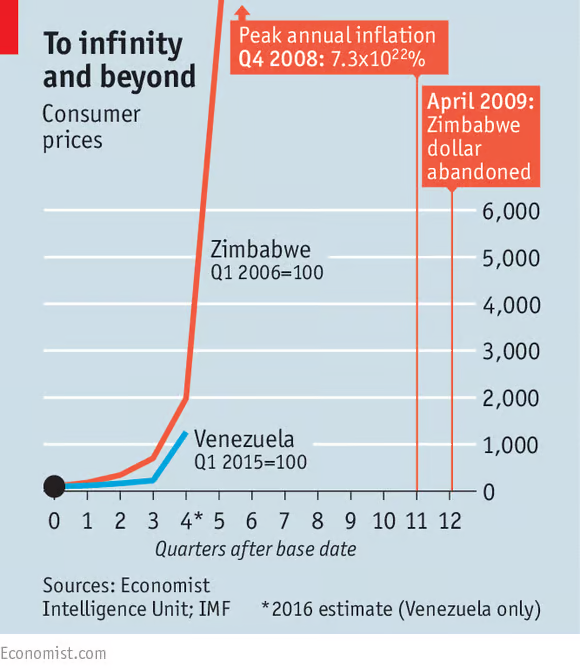This article is machine translated
Show original
💸 Hyperinflation in Zimbabwe: Don't Let This Repeat in CRYPTO⚠️
Holding 100 trillion in Zimbabwe but not enough to buy bread! What happened?
Inflation slowly destroys an economy. And it can also destroy a crypto project - where investors place twitter.com/gm_upside/status/1...

2025/04/21 11:33 :
🔥 "VEIL FALLS" OF FTX: Built in 3 years, collapsed in 3 days & Lessons for Investors
(Newcomers to crypto should read to understand how brutal the market has been 😎)
Founded in 2019, under the leadership of Sam Bankman-Fried, FTX became an exchange platform twitter.com/gm_upside/status/1...
In the 1980s, Zimbabwe was the crown jewel of Africa. The country gained independence from Britain with a diverse economy, vast tobacco plantations, sparkling gold mines and a proud education system.
The Zimbabwean dollar (ZWD) was once a solid currency,

“One mistake can lead to a thousand miles of mistakes”
The starting point was the 2000 land reform policy that confiscated land from white farmers without any support plan, which paralyzed the agricultural sector – the source of 20% of GDP.
Agricultural and industrial output fell

When Money Turns to Scrap
The worst happened. GDP fell by 40% from 2000 to 2008, unemployment exceeded 80%, millions fled the country, and more than 70% of the population was in poverty. Prices skyrocketed, with annual inflation estimated at 89.7.1021%.

Government rescue efforts
Zimbabwe was forced to act in the face of dire circumstances. In 2009, the government abandoned the ZWD, switching to the US dollar and other foreign currencies, which brought inflation down to below 5% and restored some confidence.
However, the dependence

One of the important news that can affect the market in the short term: News about the FED's interest rate policy. Based on data, unemployment rate, economic growth, consumer price index,.. and especially the inflation rate.
Easy

🤔 What about in crypto?
Solana (SOL): Inflation Supports Network Growth
Solana uses a planned inflation schedule to incentivize Staking and secure the network. According to Solana Compass, the initial inflation rate is 8%/year, gradually decreasing to 1.5% with

But there have also been many "bad" inflation episodes.
SushiSwap (SUSHI)
High Inflation at the beginning of the project due to minting 1,000 SUSHI/block and unlimited total supply, selling pressure from yield farming when farmers receive SUSHI rewards often sell after the lockup period

If the article is useful, I hope you guys support @gm_upside with a follow & retweet 😍
🛫 There is no shortage of good articles, just comment:
"Help me analyze project ABC, trend XYZ,..." and Upside will post it right away ✍️

Unlike Zimbabwe, when hyperinflation occurs in the Crypto market, it will affect the investors of the project instead of the whole country because in reality, investors have more options than the people in Zimbabwe. However, inflation in crypto

So what is a REASONABLE inflation rate?
Take blockchain projects for example 🔎
The inflation rate of a blockchain project usually ranges from 0% to 10%, used to incentivize Staking, reward validators, or fund ecosystem development.
👉Inflation rate

Token issuance mechanism and unlock schedule - factors that directly affect the level of inflation.
Projects typically use a linear or hierarchical unlock schedule, lasting from 2 to 10 years, depending on the Token 's Vai and who holds it (team, developer, etc.).

🤔 Real user needs: Inflation absorption capacity
Actual demand from users is a particularly important factor in absorbing inflation and maintaining Token value. If demand exceeds supply, Token prices can increase despite inflation.
To absorb

Current market conditions play a key Vai in amplifying or containing the impact of inflation.
🚀 In a Bull market, high investment demand helps absorb new Token , pushing prices up. But in a bear market, Token unlocking and negative sentiment are easy to

Sector:
From Twitter
Disclaimer: The content above is only the author's opinion which does not represent any position of Followin, and is not intended as, and shall not be understood or construed as, investment advice from Followin.
Like
Add to Favorites
Comments
Share
Relevant content





